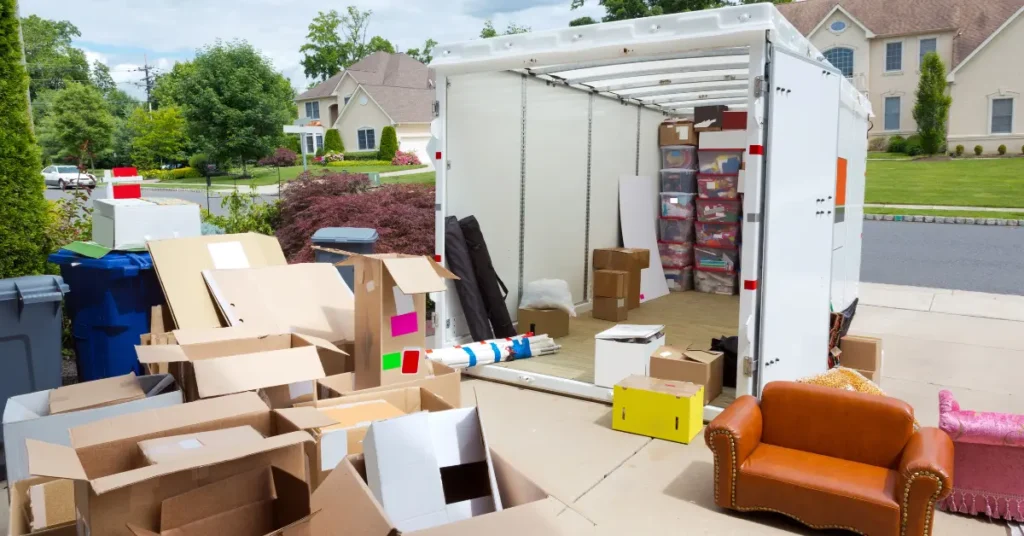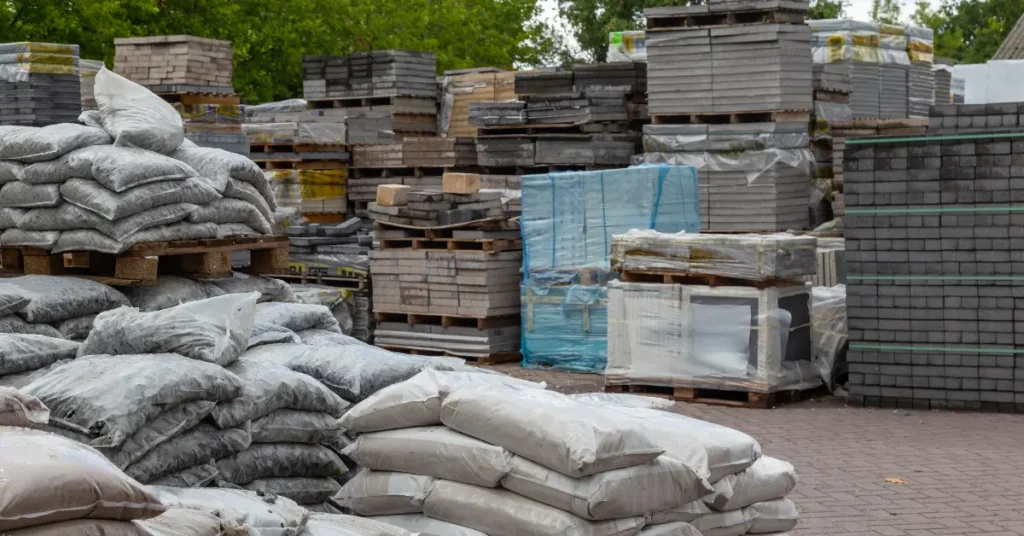In the dynamic environment of construction sites, the need for secure storage containers cannot be overstated. These containers safeguard valuable tools and materials from theft, vandalism, and environmental damage, ensuring that projects proceed without costly interruptions or delays. The use of storage containers for tools also helps maintain the organization on-site, making it easier for workers to find the equipment they need quickly. This enhances efficiency and improves safety by reducing the likelihood of accidents caused by misplaced items.
Understanding Job Site Storage Options
Mobile Job Site Storage for Versatility
The adaptability of mobile job site storage units makes them an ideal choice for projects that require frequent movement of materials across different sections of the site. These mobile units are designed to be compact yet spacious enough to store a variety of tools and equipment. The mobility factor greatly reduces the time and effort needed to transport essential items, thus boosting overall site productivity and efficiency.
Industrial-Grade Metal Storage Containers
For ultimate durability and security, industrial-grade metal storage containers are the top choice. These containers are constructed from high-strength materials that can withstand harsh weather conditions and potential tampering. Their sturdy build not only protects the contents from external elements but also offers a long-term storage solution that minimizes the need for frequent replacements, making them a cost-effective option for many contractors.

Cargo Storage Containers
When demands escalate, particularly in large-scale construction projects, cargo storage containers become essential. These units are larger and capable of holding bulkier equipment and larger quantities of materials. Their extensive capacity ensures that all necessary items are on hand, which is crucial for maintaining continuity in project workflows and preventing any operational hiccups that might arise from a lack of resources.
Key Features of Secure Storage Containers
Reinforced Construction
Storage container features such as reinforced construction are critical for providing maximum protection. Such enhancements include thicker walls and tamper-proof hinges that significantly deter unauthorized access. Robust construction ensures that the containers can resist forced entry, making them indispensable for safeguarding valuable construction equipment and materials. The reinforced design not only secures contents from theft but also adds an extra layer of durability, extending the lifespan of the containers under rigorous use conditions.
Weatherproof Design to Withstand Harsh Conditions
The design of weatherproof storage for tools is crucial in maintaining the integrity of construction equipment, which can be sensitive to environmental conditions. Engineered to withstand various harsh weather conditions, from intense sun and heat to heavy rain and freezing temperatures, here’s an in-depth look at how these containers protect valuable tools and materials:
- Sealed and Gasketed Doors: One of the most important aspects of a weatherproof design is the use of sealed and gasketed doors. These create a tight barrier that prevents water, snow, and debris from entering the container, even during severe storms. High-quality seals also block out dust, which can accumulate and damage tools over time. This feature ensures that the interior remains dry and clean, reducing the risk of corrosion, mold, or damage to sensitive materials. Regularly maintaining these seals is vital to ensure they remain effective over the long term.
- Corrosion-Resistant Materials: Containers constructed from corrosion-resistant materials like galvanized steel or treated aluminum are built to last in humid or salty environments. These materials are engineered to prevent rust, which can weaken the structural integrity of the container over time. This is particularly beneficial in coastal areas or regions with high rainfall.
- UV Protection: Prolonged exposure to ultraviolet (UV) light can weaken materials, fade paints, and compromise the structural integrity of stored tools. Weatherproof containers often feature UV-resistant coatings or materials that reflect harmful rays, protecting both the container itself and its contents. Especially critical for sites in sunny regions, as it helps maintain the durability and appearance of the container while ensuring the tools inside remain in pristine condition.
- Insulated Walls: Insulated walls help regulate the internal temperature of the container, creating a more stable environment for stored items. This feature is particularly valuable for protecting temperature-sensitive tools, paints, or adhesives that could degrade in extreme heat or cold. Insulation minimizes the impact of external weather conditions, reducing the risk of condensation, freezing, or overheating within the container. This added protection ensures that tools and materials remain functional and ready for use.
- Elevated Floors: Flooding and heavy rain can pose significant risks to tools and materials stored at ground level. Weatherproof containers with elevated floors keep the interior above water, protecting against moisture intrusion. Raised floors also promote better airflow beneath the container, reducing the buildup of humidity and potential mold. It is especially useful in areas prone to heavy rainfall or flash flooding, ensuring that the contents remain dry and undamaged.
Investing in a well-designed container tailored to withstand harsh conditions minimizes damage and reduces long-term costs associated with replacements and repairs. By choosing weatherproof storage, you ensure that your operations remain efficient and uninterrupted, regardless of the environmental challenges.
Advanced Locking Systems
An advanced locking system for containers includes programmable electronic locks, crossbar locks, and hidden shackle padlocks, each offering unique benefits to deter theft and vandalism effectively. These are designed to be exceptionally resistant to picking and cutting, providing a high level of security for remote or unmonitored job sites. By incorporating such advanced technologies, contractors can significantly reduce the risk of equipment and material theft, a prevalent issue in the construction industry.
Customization Options
Customization is another essential feature of industrial storage containers. Depending on the specific needs of a project, containers can be modified with shelves, hooks, and partitions to organize tools and materials efficiently. Electrical installations and lighting can also be added to enhance functionality, allowing for storage that secures and simplifies inventory management. Such adaptability makes industrial containers a versatile choice for contractors who need tailored contractor storage solutions that align perfectly with their operational demands.

Renting Storage Containers: Practical Considerations
Factors to Evaluate
Renting storage containers involves several critical considerations to ensure you receive the best value and support for your project needs. It is essential to assess the provider’s reliability, which can be measured through customer reviews and business reputation. Also, evaluate the range of available container options, as various sizes and types (such as standard, high-cube, or specialized containers) should be offered to suit different project requirements. Another key factor is the flexibility of rental terms, which should accommodate the project’s timeline, whether for short-term needs or longer durations.
Selecting the Right Size
Selecting the appropriate size for a storage container is vital to maximize efficiency and cost-effectiveness on a job site. Containers typically range from 10 feet to 40 feet in length, with varying heights and widths. The choice depends on the volume of materials and equipment needed on-site, as well as the available space for placing the container. Smaller containers are sufficient for limited storage needs or tight spaces, while larger containers are better suited for storing bulky items or high volumes of materials.
Cost-Effectiveness of Renting vs. Buying
Renting eliminates the need for large upfront investments and the long-term maintenance costs associated with ownership. It also provides flexibility to change container sizes based on evolving project needs without additional capital expenditure, ensuring that the storage for job sites can be adapted as the project scales up or down.
Coordinating Delivery and Placement
Proper coordination of storage container delivery and placement is essential for seamless integration into the job site operations. Here’s a step-by-step guide to ensure effective coordination:
- Site Evaluation: Begin by conducting a thorough site evaluation to identify the ideal location for the storage container. Consider factors such as ground stability, proximity to work areas, and access for vehicles delivering the container. Level ground is essential to prevent tilting, which can cause structural stress and impede the proper functioning of the doors. Evaluate potential environmental risks, such as areas prone to flooding or strong winds, and choose a location that minimizes these hazards. Proper planning during this stage can prevent future disruptions and ensure easy access to the container.
- Scheduling Delivery: Coordinate with the rental company to schedule a delivery time that aligns with your job site activities. Deliveries during peak operational hours can lead to delays and congestion, so it’s often best to plan for early mornings, late afternoons, or off-peak times. Ensure that the delivery schedule takes into account weather conditions and potential site-specific challenges, such as limited access during busy periods. Clear communication with the supplier ensures they understand your requirements, reducing the chances of miscommunication or errors.
- Preparing the Site: Before the container arrives, prepare the designated area to ensure it’s ready for placement. Remove debris, construction materials, or other obstructions that could interfere with delivery. For added stability, lay down gravel, paving stones, or a concrete base to support the container. This preparation minimizes the risk of the container shifting or sinking, especially on soft or uneven ground. Proper site preparation also helps maintain the integrity of the container and its contents, reducing the risk of damage from environmental factors.
- Delivery Day Coordination: On the day of delivery, have a site manager or designated team member present to oversee the process. This individual should guide the delivery driver to the exact placement location and address any issues that arise, such as access difficulties or unexpected obstacles. They can also confirm that the container is placed according to the agreed-upon plan, ensuring optimal positioning for daily use. A well-coordinated delivery minimizes disruptions and ensures the container is ready for immediate use.
- Post-Delivery Inspection: After the container has been delivered and placed, conduct a comprehensive inspection to verify its condition and placement. Check that the container is level and securely positioned and that the doors open and close without obstruction. Inspect for any signs of damage that may have occurred during transit or delivery. Address any concerns immediately with the supplier or delivery team to ensure the container meets your expectations and is safe for use.
You can ensure a smooth integration into your job site operations by taking the time to evaluate the site, schedule delivery strategically, and oversee the placement process. This proactive approach helps avoid costly delays, enhances efficiency, and ensures the container is well-positioned for optimal use.
Maximizing the Benefits of Secure Storage
Tips for Proper Maintenance
Regular inspections are the cornerstone of effective upkeep, as they help identify issues like rust, dents, or damage to the locking mechanisms early on. Addressing these problems promptly prevents them from worsening and compromising the container’s security or durability. For instance, any rust spots should be treated with rust remover and repainted to prevent further corrosion. Similarly, locks should be tested periodically to ensure they are functioning smoothly and remain tamper-proof. Keeping detailed records of inspections and repairs can help track the container’s condition over time and make maintenance schedules more systematic. Maintaining the structural integrity of storage containers also involves paying close attention to the seals and gaskets on the doors. These components are vital for preventing water ingress, which can lead to mold growth, material degradation, and other issues. Make sure that the seals are clean, undamaged, and properly aligned during regular maintenance checks. In environments with high humidity or frequent rainfall, it’s worth investing in desiccant packs or moisture-absorbing products to mitigate the risk of condensation inside the container. Proper ventilation systems can also help regulate the internal environment, preventing moisture buildup and protecting stored materials.
Regular Cleaning for Long-Lasting Performance
Cleaning the container regularly is another essential aspect of upkeep. Debris, dirt, and oil spills should be promptly removed to maintain a clean and safe interior. Pressure washing the exterior can help preserve the container’s paint and finish, while the interior should be swept, mopped, or vacuumed as needed. Cleaning also provides an opportunity to identify hidden damage that might otherwise go unnoticed. In addition to cleaning, consider applying protective coatings or weatherproofing sprays to the container’s exterior to enhance resistance to environmental damage.

The success of any construction project rests significantly on how well resources are managed and protected. On-site storage containers play a pivotal role in this context by safeguarding valuable tools and materials from theft, damage, and the elements. Their use not only secures assets but also streamlines operations, contributing to the overall efficiency and effectiveness of the project management process. Ensuring that every piece of equipment is accounted for in good condition and ready for use directly impacts project timelines and budgets, underscoring the critical nature of secure storage in construction environments.

 Receive a Quick Quote
Receive a Quick Quote


 ” -Zachary
” -Zachary